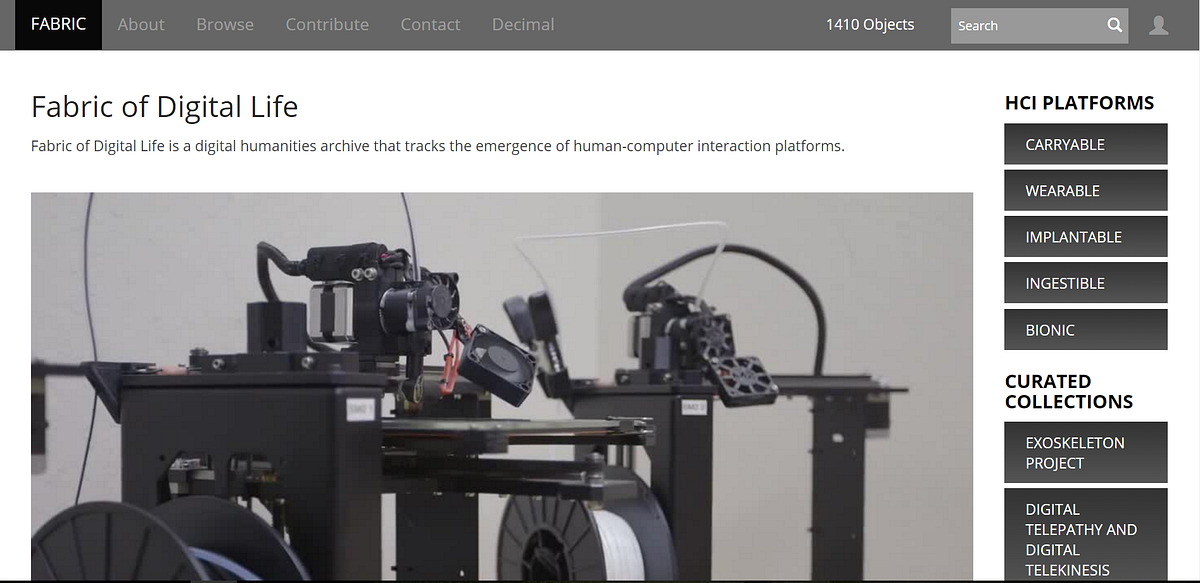Andrew Iliadis and Isabel Pedersen
The term “wearables” has always been something of a misnomer. In tech circles, the term usually refers to things like fitness monitoring devices or smart glasses; we don’t tend to think of involuntary tracking technologies, like ankle bracelets or workplace tracking devices, as wearables. Wearables don’t accurately describe concepts like implanted and bionic technology, but that is often the intention. Popularized during the public frenzy around Google Glass and the ensuing wearable boom, body-centered technologies are often framed as technology-enabled solutions for everything from sickness and health to pet monitoring and security.
As researchers who investigate the ethical, cultural, and political implications of different forms of body-augmenting technology — something we like to call “embodied technology” — we have been interested in reversing the perspective and looking closely at those working to create embodied technologies, and the underlying motivations that inform development. A widely-shared piece by Ethan Zuckerman on the pitfalls of using virtual reality devices in prisons rightly pointed out that those working to develop embodied technologies are prone to “working on the wrong problem.” Embodied technologies are often offered as solutions to one problem when larger problems persist.
There are multiple ways of understanding the problems that technological progress assumes to solve. Snapchat develops glasses for handless photography while at universities researchers attempt to build embodied technologies that assist with phantom limb pain. The difference, pointed out in a tweet from the Society for the Philosophy of Technology’s Special Interest Group on Computers, Information, and Society, is that there are often two narratives of technological progress at play. One originates in places like Silicon Valley, the other at institutions like universities.
Tech developed for profit will often build technologies and look for multiple applications — a version of the well-known dictum “if all you have is a hammer, everything looks like a nail.” Academically-backed development is different in that it (not always, but often) starts from a problem and then thinks about a solution.

As we make demands on embodied technologies, those technologies will influence law and policy; depending on one’s level of abstraction, they can also frame narratives of technological progress.
There are other, less visible instances where social, ethical, political, and cultural concerns have been raised surrounding embodied technologies. DARPA has worked on developing brain implants to assist with memory and exoskeletons to augment human strength. In the workplace, various companies have developed embodied technologies to assist with labor, though often these technologies merely deal with tracking. Issues relating to gender and sexuality, vulnerable populations, and justice are often not included in discussions about embodied technologies, even though embodied technologies have implications that necessarily extend beyond the scope of research and design in the laboratory.

FABRIC is an online digital archive for storing media related to embodied technologies — things like patents, news releases, instructional videos, and art. The archive allows users to track, catalog, and view artifacts related to human-computer interaction platforms, designs, and ideas, including images, videos, texts, websites, and data sets that document emerging trends. Curated sub-collections are hosted on the archive that relate to a variety of themes, including ethics, surveillance, and vulnerable populations.
The underlying motivation is to provide a tool for illustrating the diverse, shared origins of embodied technology platforms, separate from profit-driven inventors and companies. A secondary motivation was to provide a space for thinking about social issues and embodied technologies. The archive allows users to browse keywords (“smart watch” for example) and through a customized metadata scheme users can collect and catalogue embodied technologies and the discourse that surrounds them.
Currently, our hope is that researchers who have interests in embodied technologies will begin to use the archive, add to it, and help build the specially curated collections that are inside to highlight the various ways that embodied technologies stand to impact society and culture.
If you’d like to learn more or collaborate, you can email Andrew Iliadis at andrew.iliadis@uoit.ca
